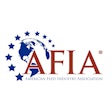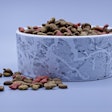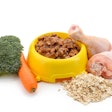I admit, I may have been a tad premature in my announcement of the imminent publication of the National Research Council (NRC) Nutrient Requirements of Dogs and Cats based on the release of its preliminary report (Dzanis, D.A., 2003). Regardless, I can now say with utmost confidence that the final NRC report is now available to the public.
As a member of the Ad Hoc Committee on Dog and Cat Nutrition that prepared the report, I can tell you I'm glad the going-on-six-year process has come to fruition. The publication can be viewed online and purchased at the National Academies Press website at: http://www.nap.edu/catalog/10668.html.
What's in the new NRC?
The previous editions of Nutrient Requirements of Dogs and Nutrient Requirements of Cats were published in 1985 and 1986, respectively. Thus, 20 years of accumulated data on canine and feline nutrition have been incorporated compared to previous versions. That means, in addition to the fact that the new edition covers two species, the resulting work is much more extensive than in the past. At almost 400 pages in length, it beats the 2001 Nutrient Requirements of Dairy Cattle by a bit more than a few pages and, to the best of my knowledge, may be the largest book in the Nutrient Requirements series to date.
Similar to previous versions, the text discusses data on requirements for energy, protein, fat, minerals, vitamins and water, as well as information on other food constituents and diet formulation and processing, although in significantly more detail than in the past. Quite extensively updated is the discussion on carbohydrates. What was covered in two pages in the 1985 dog book and one page in the 1986 cat book now commands its own 31-page chapter. New to this edition are chapters on digestive physiology, feeding behavior, considerations for laboratory animals and effects of physical activity and environment on nutrient requirements.
The crux of the report, though, is the tables. In addition to a table of proximate analysis values for major petfood ingredients, there are separate tables for fatty acid, carbohydrate, amino acid, mineral and vitamin contents of ingredients. With respect to nutrient requirements, there is a separate table for each lifestage (maintenance, growth and gestation/lactation) for each species. Minimal requirements (or adequate intakes, where no minimal requirements are known), recommended allowances and safe upper limits are expressed both in terms of the food (amount per kilogram dry matter and per 1,000 kilocalories metabolizable energy) and the animal (amount per kilogram body weight raised to the three-quarter power).
Regulatory impact
Presently in the United States, the Association of American Feed Control Officials (AAFCO) does not recognize NRC as the authority for label substantiation of nutritional adequacy for dog and cat foods. Because of concerns related to the practical applicability of the NRC recommendations in the 1985 and 1986 editions, AAFCO replaced "meets or exceeds NRC recommendations" with reference to the AAFCO Dog and Cat Food Nutrient Profiles in the early 1990s. The expert panels that developed the Profiles did largely base its nutrient requirement values on NRC recommendations, though, albeit with additional considerations for practical petfood formulation with commonly-used ingredients.
The new NRC does address at least some of the practical applicability issues of the previous versions. Since it has been about 10 years since the Profiles were revised, they are not up-to-date at this time either. However, that does not mean AAFCO intends to forego recognition of the Profiles as the label authority in deference to the new NRC.
As I understand it, AAFCO intends to reconvene its expert panel to review the recent NRC recommendations along with any other newly-available information. As an outcome of its deliberation, the AAFCO Dog and Cat Food Nutrient Profiles most likely will be revised as seen fit and appropriate by the panel. Since there will be members of the petfood industry on the panel, I'm sure any practical applicability concerns will be addressed. In any event, I anticipate this process to take some time. I'm guessing it will take until issuance of the 2008 AAFCO Official Publication before any changes to the Profiles become effective, if that soon.
I assume other petfood nutritional standard-setting organizations (FEDIAF in Europe, CVMA in Canada, etc.), will also be looking at the new NRC recommendations with an eye on updating their recommendations for dog and cat foods. Some other countries, though, do rely on the NRC recommendations directly as the authority for determining nutritional adequacy of petfoods. Based on some petfood manufacturers' concerns regarding the preliminary NRC report, it will be interesting to see their reaction to the final publication.














